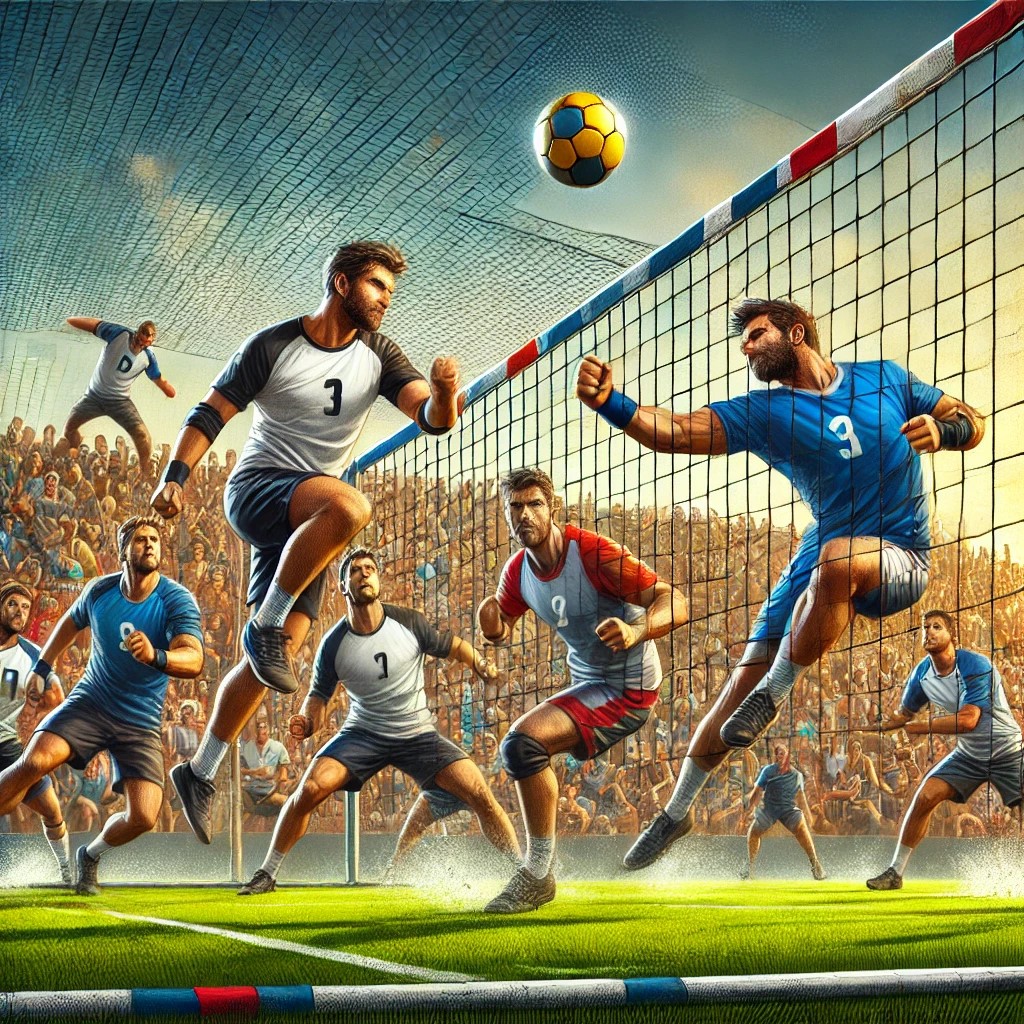
Fistball: A Comprehensive Guide to the Dynamic Sport
Fistball is an exhilarating team sport that has captivated players and fans for centuries. Known for its fast-paced action and teamwork, it combines elements of volleyball and tennis with unique features. This sport has a rich history, global reach, and a growing community of players and enthusiasts. In this blog post, we will delve into the origins, global popularity, amateur and professional levels, social and political significance, and the rules of Fistball.
The Origin and History of Fistball
Fistball’s roots can be traced back to ancient Rome. Historical records suggest it was played as a recreational activity among Roman soldiers. The earliest version involved striking a ball with the fist to keep it airborne. This early form laid the foundation for the structured sport we know today.
In the 16th century, Fistball resurfaced in Europe, particularly in Italy and Germany. The modern version of the game took shape in the late 19th century in Germany. Georg Weber, a German gymnastics instructor, formalized its rules, integrating the sport into gymnastics clubs. This effort boosted its popularity and introduced organized competitions.
The sport’s international debut occurred in 1913 during the German Gymnastics Festival in Leipzig. It gained momentum in the 20th century, with the International Fistball Association (IFA) forming in 1960. The IFA has since overseen the sport’s global development, including organizing World Championships.
Global Popularity of Fistball
Fistball’s appeal spans continents, thriving in Europe, South America, and Oceania. Germany remains its strongest stronghold, boasting thousands of players and clubs. Neighboring countries such as Austria and Switzerland also share a passion for the game.
In South America, Brazil has emerged as a dominant force. The country’s enthusiasm for Fistball is evident in its competitive teams and vibrant local leagues. Argentina also hosts a growing community of players, with clubs and schools introducing the sport to new generations.
In Oceania, Australia has embraced Fistball as a niche yet vibrant sport. Enthusiasts organize tournaments and promote it through schools and community programs. Meanwhile, Asian countries like Japan and India have begun exploring Fistball, contributing to its expanding global presence.
The World Games, an international event for non-Olympic sports, has been instrumental in boosting Fistball’s visibility. The inclusion of Fistball in these games has attracted attention from audiences worldwide. As a result, the sport continues to gain recognition and popularity.
Amateur Fistball: Youth and Schools
Amateur Fistball plays a crucial role in nurturing talent and spreading awareness. Schools and youth organizations introduce the sport to children, fostering a love for teamwork and physical activity. In Germany and Austria, it is integrated into physical education programs. These initiatives lay the groundwork for future athletes.
In South America, grassroots efforts bring Fistball to underserved communities. Coaches and volunteers work tirelessly to provide equipment and training. This approach not only promotes the sport but also empowers young individuals through teamwork and discipline.
Australia’s amateur Fistball scene thrives on community engagement. Clubs host open days and workshops to attract beginners. Schools collaborate with local organizations to integrate Fistball into extracurricular activities, ensuring a steady influx of young players.
Professional Leagues and Competitions
Professional Fistball leagues showcase the sport’s highest level of competition. In Germany, the Bundesliga features elite teams battling for supremacy. The league’s popularity attracts fans and fosters a vibrant culture around the sport.
In Brazil, professional Fistball has witnessed significant growth. Clubs invest in player development, ensuring their teams remain competitive on the international stage. Tournaments such as the South American Fistball Championships highlight the region’s talent.
Switzerland and Austria also boast competitive leagues. These countries maintain strong traditions of Fistball excellence. Players often transition from amateur to professional levels, driven by robust support systems and coaching infrastructure.
The IFA organizes the World Championships and continental tournaments, providing a platform for top players. These events draw global audiences and inspire young athletes to pursue the sport professionally. The visibility of these tournaments underscores Fistball’s potential as a mainstream sport.
Social and Political Significance of Fistball
Fistball fosters camaraderie and unity, transcending cultural and geographical boundaries. Community-driven initiatives use the sport to promote inclusivity and social cohesion. In regions with limited recreational opportunities, it serves as a valuable outlet for physical activity and teamwork.
Politically, the sport has played a role in strengthening international relations. Friendly matches and tournaments encourage cultural exchange and mutual understanding. Events like the World Games emphasize the spirit of global cooperation and sportsmanship.
Fistball also contributes to gender equality. Women’s Fistball leagues and competitions have gained prominence, empowering female athletes. These efforts reflect the sport’s commitment to inclusivity and diversity.
Rules of Fistball
The rules of Fistball are straightforward yet dynamic, ensuring an engaging experience for players and spectators. The game is played on a rectangular grass or indoor court, divided by a net. Each team consists of five players.
The objective is to strike the ball over the net into the opponent’s half, aiming to score points. Players use their fists or arms to hit the ball. The opposing team must return it within three touches, similar to volleyball.
A match consists of sets, with teams aiming to reach 11 points first. Victory requires a two-point margin. Matches are typically played in a best-of-five format, adding to the excitement.
Serving alternates between teams, with each serve initiating a rally. Players must adhere to specific serving zones. Fouls occur if the ball touches the ground more than once on a team’s side or if it is hit out of bounds.
Fistball demands agility, coordination, and strategic thinking. Players must anticipate their opponents’ moves and respond quickly. The sport’s dynamic nature ensures every match remains unpredictable and thrilling.
Conclusion
Fistball is a sport steeped in history, global reach, and cultural significance. Its blend of physicality and strategy makes it appealing to players of all ages. From its ancient origins to modern professional leagues, it continues to evolve and captivate audiences worldwide.
Efforts to promote amateur Fistball ensure a steady stream of new talent. Professional leagues and international tournaments showcase the sport’s competitive spirit. Meanwhile, its role in fostering social unity and gender equality highlights its broader impact.
Whether you’re a seasoned player or a curious newcomer, Fistball offers an exciting and rewarding experience. Embrace this dynamic sport and become part of its growing community.




